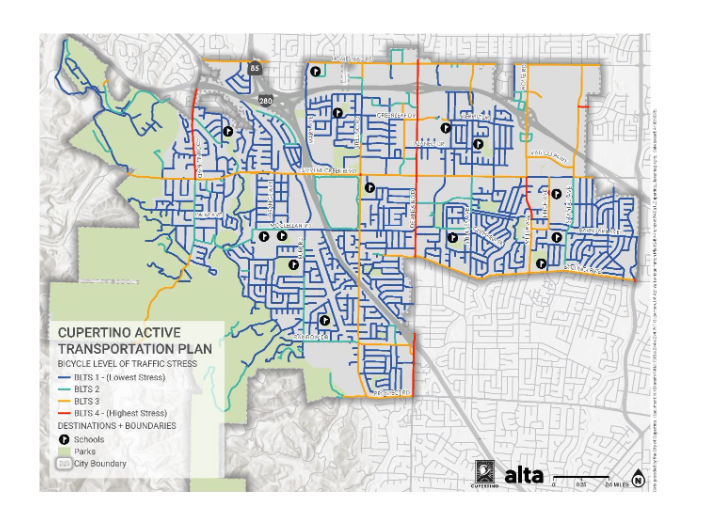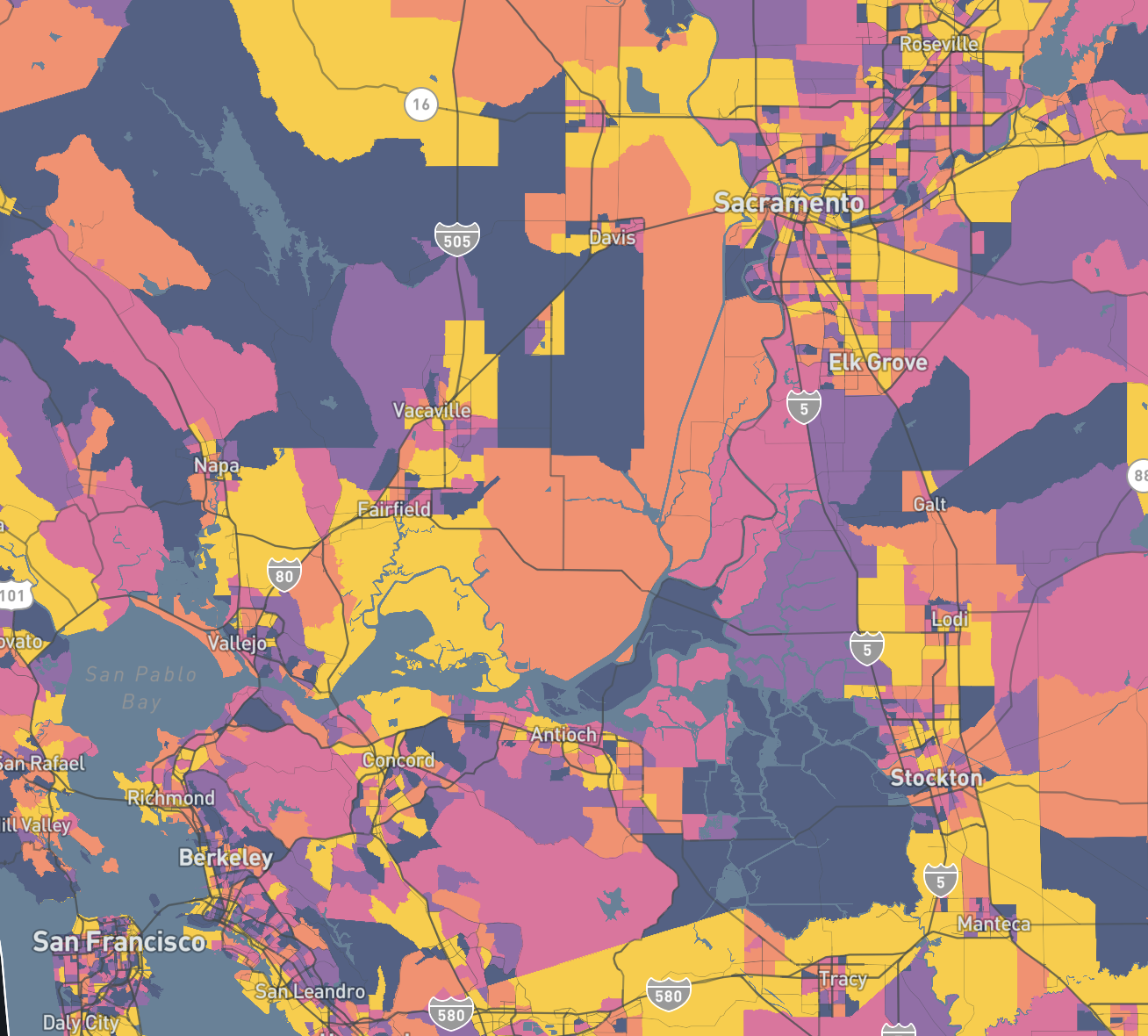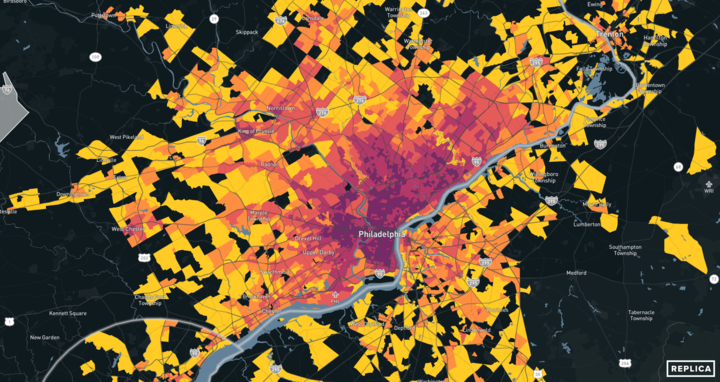During the Covid-19 pandemic, cars became an even more common way to make short trips in major U.S. cities, while only some cities saw pedestrian activity increase, new data from Replica shows.
In spring 2021, cars were used for about 6 in 10 short trips (under 2 miles) in Houston, Miami, Phoenix, Los Angeles, and Dallas. They also rose to account for more than one-quarter of all short trips in New York and DC.
We analyzed the core cities of the 10 largest U.S. metro areas because they show a diverse spread of places in terms of geography, development patterns, and transportation networks. We looked at short trips because they capture an element of choice: Someone traveling a mile or so away is more likely to be able to make that trip by car, bike, transit, or on foot.
A variety of unusual factors and policy interventions during the height of the pandemic contributed to changes in people’s mobility behavior. These include: people staying at or near home, a heightened risk to health on public transit, a surge in interest in cycling, changes in peak traffic hours, and pedestrian-friendly safe-streets initiatives.
By looking into short trips in these cities, we can get a sense of how these factors influenced people’s activities overall and in specific places, as well as how the “new normal” is taking shape.
Transit ridership: The struggle is real
It won’t surprise anyone to hear that transit usage withered for short trips across the board. That’s especially true in places where transit networks were a staple of commuting before the pandemic.
Transit’s mode share fell by more than 10 points in New York City, which amounts to 1.3 million fewer short trips on a typical day in 2021. DC’s 8.5-point drop reduced short transit trips in the city to just 11% of the daily total in 2019 (about 100,000 on a typical day in 2019 vs. 11,000 in 2021).
To secure an equitable economic future, the United States must ensure that environmental and economic justice are key considerations in how we govern. That means investing and building a clean energy economy … turning disadvantaged communities — historically marginalized and overburdened — into healthy, thriving communities.
– Section 219, Executive Order, January 27, 2021
Biking and walking: Where it gets interesting
Active mobility tells a more complicated story.
No city saw its share of bike trips decline, but dense cities posted bigger gains. DC had the largest increase of 1.6 percentage points, growing from about 17,000 daily trips in spring 2019 to 28,000 in fall 2021. Philadelphia (0.9 points), Chicago (0.8 points) and New York (0.5 points) followed. Atlanta, Los Angeles, Phoenix, and Miami had modest increases, while Dallas and Houston saw no change.
More data for further exploration
Replica built the first nationwide activity-based travel model so our customers can better understand, in detail, how mobility activity is changing in an unprecedented time.
With Replica data, it’s possible to dig deeper into these short trips, and others, across many dimensions. Some questions customers might explore with our data include:
How did trip-taking activity differ between people who worked from home and those who went back to the office?
How does walking and cycling activity vary by neighborhood, and in relation to walking and cycling infrastructure?
How does transit, car, and active mobility activity differ across a city’s demographic and socioeconomic cohorts?
If you’re interested in digging into the data for your city, including absolute trip counts and origin-destination flows, please get in touch.
Full mode split data for 2019 and 2021
Below we’ve included the full mode split data for fall 2019 and spring 2021. Hover over a category in a chart or the legend to see the figures for each city.








